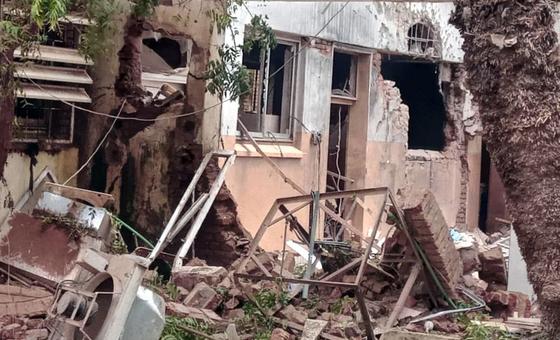
In an alert from the UN aid coordination office, OCHA, it reported more than 28,000 cases of cholera and 836 deaths in 11 states between 22 July and 28 October.
The actual number of people infected with the disease may be higher owing to under-reporting, said OCHA; the UN agency also noted in its latest update on the emergency that cases of dengue fever have continued to tick upwards, too.
Rain compounds disease
The current cholera outbreak gained momentum following an unusually heavy rainy season which caused flooding that contaminated water sources. Kassala is the hardest-hit state with 6,868 cases and 198 deaths, followed by Gedaref, Al Jazirah, and Northern state.
Sudan’s dengue fever surge has been particularly severe in Kassala and Khartoum. As of 28 October, 4,544 cases and 12 dengue-related deaths were reported, with Kassala alone accounting for over half of these cases.
On 12 August, the Ministry of Health declared a new cholera wave that began on 22 July, prompting a renewed response by Sudanese health authorities and humanitarian organizations. A vaccination campaign launched in October aims to immunize around 1.4 million people in the most affected states.
The development comes as UN and partner aid teams have continued to warn about life-threatening hunger in parts of Sudan, linked to a blockade and escalating fighting in El Fasher, North Darfur state. The lone Government-held city left there has seen some of the fiercest clashes since the start of the war between rival militaries the Sudanese Armed Forces (SAF) and the Rapid Support Forces (RSF) last April.
Famine risk grows
“This has delayed or prevented the delivery of commercial and humanitarian supplies to areas of acute need,” said OCHA. It cited NGO Médecins Sans Frontières (MSF) which confirmed that acute malnutrition rates “remain above the Famine (IPC Phase 5) threshold in Zamzam internally displaced persons camp”, referencing the UN-backed Integrated Food Security Phase Classification (IPC) initiative.
Famine conditions were confirmed in Zamzam camp in August. While data remains limited for nearby Abu Shouk and Al Salam displacement camps near El Fasher, OCHA noted “significant civilian movement away from these camps and towards Zamzam”, driven by the heavy fighting, for safety and access to services.
These vital services are under threat, however, including for some 5,000 children whose treatment by MSF for acute malnutrition in Zamzam camp had to be halted on 10 October “because reportedly for months the parties to the conflict had blocked the delivery of food, medicines, and other essential supplies”.
Humanitarians are also “increasingly alarmed that similar extreme acute food insecurity” is happening among internally displaced communities in the besieged areas of Dilling and possibly Kadugli in South Kordofan state.
8 in 10 health facilities shut
Sudan’s healthcare system remains overwhelmed, with many hospitals barely operational or completely shut down due to supply and fuel shortages. According to the UN World Health Organization (WHO), up to 80 per cent of health facilities in conflict zones – including Al Jazirah, Kordofan, Darfur and Khartoum – are either barely functional or closed.
“This collapse is impeding child vaccination programmes and accelerating the spread of preventable diseases, raising concerns about potential large-scale outbreaks,” WHO said.
Medical staff and centres under attack
Violent attacks on healthcare facilities have intensified, with 116 incidents reported since the outbreak of hostilities on 15 April 2023, resulting in 188 deaths and 140 injuries. The WHO surveillance platform for attacks on healthcare has documented widespread incidents of violence, looting, and intimidation affecting medical staff, facilities, ambulances and patients.
In the face of Sudan’s enormous humanitarian crisis which has uprooted more than 11 million people inside the country and pushed some three million across its borders, aid partners have continued to scale up response across the country and reach 12.6 million people.
